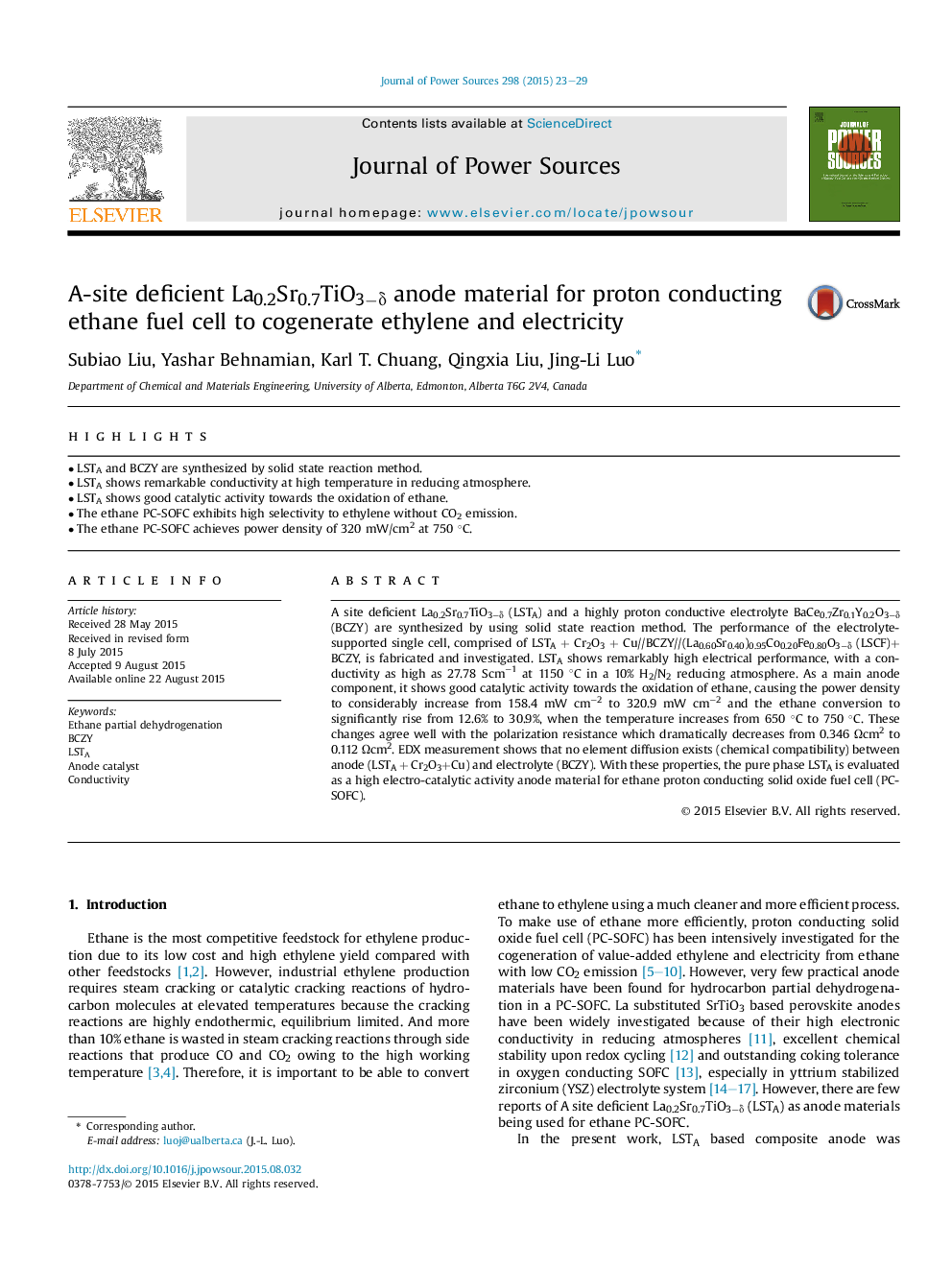| Article ID | Journal | Published Year | Pages | File Type |
|---|---|---|---|---|
| 1283812 | Journal of Power Sources | 2015 | 7 Pages |
•LSTA and BCZY are synthesized by solid state reaction method.•LSTA shows remarkable conductivity at high temperature in reducing atmosphere.•LSTA shows good catalytic activity towards the oxidation of ethane.•The ethane PC-SOFC exhibits high selectivity to ethylene without CO2 emission.•The ethane PC-SOFC achieves power density of 320 mW/cm2 at 750 °C.
A site deficient La0.2Sr0.7TiO3−δ (LSTA) and a highly proton conductive electrolyte BaCe0.7Zr0.1Y0.2O3−δ (BCZY) are synthesized by using solid state reaction method. The performance of the electrolyte-supported single cell, comprised of LSTA + Cr2O3 + Cu//BCZY//(La0.60Sr0.40)0.95Co0.20Fe0.80O3−δ (LSCF)+BCZY, is fabricated and investigated. LSTA shows remarkably high electrical performance, with a conductivity as high as 27.78 Scm−1 at 1150 °C in a 10% H2/N2 reducing atmosphere. As a main anode component, it shows good catalytic activity towards the oxidation of ethane, causing the power density to considerably increase from 158.4 mW cm−2 to 320.9 mW cm−2 and the ethane conversion to significantly rise from 12.6% to 30.9%, when the temperature increases from 650 °C to 750 °C. These changes agree well with the polarization resistance which dramatically decreases from 0.346 Ωcm2 to 0.112 Ωcm2. EDX measurement shows that no element diffusion exists (chemical compatibility) between anode (LSTA + Cr2O3+Cu) and electrolyte (BCZY). With these properties, the pure phase LSTA is evaluated as a high electro-catalytic activity anode material for ethane proton conducting solid oxide fuel cell (PC-SOFC).
